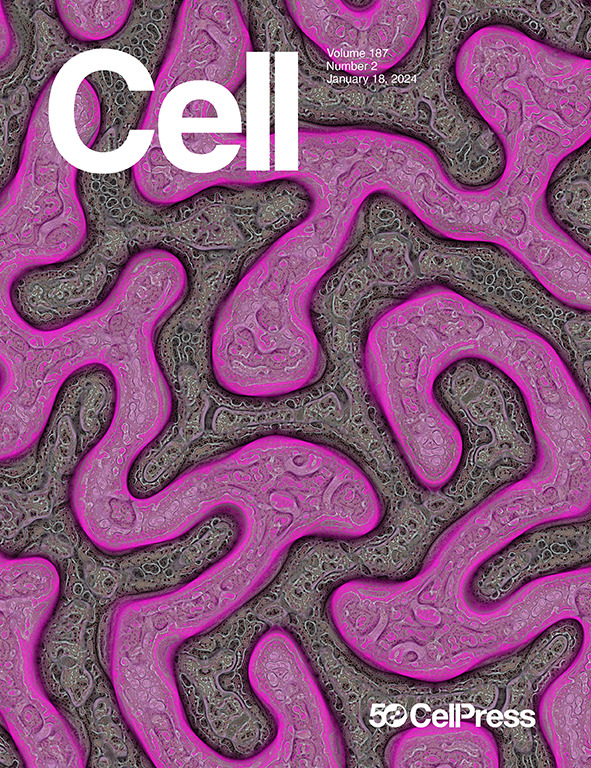Microbiome mismatches from microbiota transplants lead to persistent off-target metabolic and immunomodulatory effects
IF 42.5
1区 生物学
Q1 BIOCHEMISTRY & MOLECULAR BIOLOGY
引用次数: 0
Abstract
Fecal microbiota transplant (FMT) is an increasingly used intervention, but its suitability to restore regional gut microbiota, particularly in the small bowel (SB), must be questioned because of its predominant anaerobic composition. In human subjects receiving FMT by upper endoscopy, duodenal engraftment of anaerobes was observed after 4 weeks. We hypothesized that peroral FMTs create host-microbe mismatches that impact SB homeostasis. To test this, antibiotic-treated specific-pathogen-free (SPF) mice were given jejunal, cecal, or fecal microbiota transplants (JMTs, CMTs, or FMTs, respectively) and studied 1 or 3 months later. JMT and FMT altered regional microbiota membership and function, energy balance, and intestinal and hepatic transcriptomes; JMT favored host metabolic pathways and FMT favored immune pathways. MTs drove regional intestinal identity (Gata4, Gata6, and Satb2) and downstream differentiation markers. RNA sequencing (RNA-seq) of metabolite-exposed human enteroids and duodenal biopsies post-FMT confirmed transcriptional changes in mice. Thus, regional microbial mismatches after FMTs can lead to unintended consequences and require rethinking of microbiome-based interventions.

来自微生物群移植的微生物组不匹配导致持续的脱靶代谢和免疫调节效应
粪便微生物群移植(FMT)是一种越来越多使用的干预措施,但由于其主要的厌氧成分,它是否适合恢复局部肠道微生物群,特别是在小肠(SB)中,必须受到质疑。在通过上腔镜接受FMT的人类受试者中,在4周后观察到厌氧菌的十二指肠植入。我们假设口腔FMTs会产生影响SB稳态的宿主-微生物不匹配。为了验证这一点,对经抗生素治疗的无特异性病原体(SPF)小鼠进行空肠、盲肠或粪便微生物群移植(分别为JMTs、cmt或FMTs),并在1或3个月后进行研究。JMT和FMT改变了区域微生物群成员和功能、能量平衡以及肠道和肝脏转录组;JMT有利于宿主代谢途径,FMT有利于免疫途径。MTs驱动区域肠道身份(Gata4、Gata6和Satb2)和下游分化标记。代谢产物暴露的人肠道和十二指肠活检的RNA测序(RNA-seq)在fmt后证实了小鼠的转录变化。因此,fmt后的区域微生物错配可能导致意想不到的后果,需要重新考虑基于微生物组的干预措施。
本文章由计算机程序翻译,如有差异,请以英文原文为准。
求助全文
约1分钟内获得全文
求助全文
来源期刊

Cell
生物-生化与分子生物学
CiteScore
110.00
自引率
0.80%
发文量
396
审稿时长
2 months
期刊介绍:
Cells is an international, peer-reviewed, open access journal that focuses on cell biology, molecular biology, and biophysics. It is affiliated with several societies, including the Spanish Society for Biochemistry and Molecular Biology (SEBBM), Nordic Autophagy Society (NAS), Spanish Society of Hematology and Hemotherapy (SEHH), and Society for Regenerative Medicine (Russian Federation) (RPO).
The journal publishes research findings of significant importance in various areas of experimental biology, such as cell biology, molecular biology, neuroscience, immunology, virology, microbiology, cancer, human genetics, systems biology, signaling, and disease mechanisms and therapeutics. The primary criterion for considering papers is whether the results contribute to significant conceptual advances or raise thought-provoking questions and hypotheses related to interesting and important biological inquiries.
In addition to primary research articles presented in four formats, Cells also features review and opinion articles in its "leading edge" section, discussing recent research advancements and topics of interest to its wide readership.
 求助内容:
求助内容: 应助结果提醒方式:
应助结果提醒方式:


